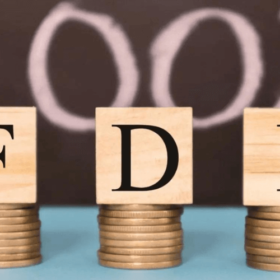On the morning of April 24, 04, the leaders of the General Department of Taxation and the leaders of the Tax Departments of the provinces and cities directly under the Central Government had an online conference meeting at 2023 bridge points to announce the implementation of the "Analysis system". database and electronic invoice management” chaired by Acting Director of General Department of Taxation Mai Xuan Truong.
Measures should be taken to strengthen control of e-commerce data
The process of implementing e-invoices (e-invoices) has achieved positive results, up to now, more than 04 billion e-invoices have been issued. Implementing the Tax Administration Law, the Ministry of Finance has applied the implementation of e-invoices nationwide, accompanies businesses in the digital transformation process, and helps taxpayers fulfill their obligations to the bank. State policies, creating transparency and equality, contributing to improving the business environment according to the objectives of the Finance sector and the Government.
However, with an increasing number of invoices, through the inspection and monitoring process, the General Department of Taxation found that there were still some organizations and individuals who cheated in the issuance and use of e-invoices to appropriate tax money. Therefore, tax authorities had to strengthen control and apply modern techniques to analyze big data. To solve this problem, the General Department of Taxation has deployed the Electronic Invoice Database Center, which helps to analyze e-invoice data and implement risk management of e-invoices in the whole industry. Tax.
The system will help tax officials have tools and data sources to compare e-invoice data with tax declarations, assess taxpayers' implementation and compliance with tax laws, thereby preventing and promptly handling Timely cases of invoice violations as well as acts of fraud, tax evasion, value-added tax refund in contravention of regulations, contributing to improving tax management efficiency.
Function to compare data, zoning doubts
The highlight of the Electronic Invoice Database center that the General Department of Taxation has just announced is the ability to analyze huge data to serve the risk management of e-invoices in the whole tax industry.
Function to compare data of e-invoice with tax declaration: helps to compare and contrast the data of the e-invoice made with the tax declaration according to the obligations arising automatically after 5 days from the due date to submit the declaration. Thereby, tax officials can make a list of taxpayers with data differences between the declared value and the invoice value, thereby taking appropriate professional measures such as checking at the desk. , inspection at the taxpayer's office or transfer the file to the investigating agency if necessary to assess the taxpayer's implementation and compliance with the law.
The function of evaluating the use of invoices by taxpayers in the month: the tax authority can perform a review of the taxpayer's data as soon as the end of the month. The data monitored by the tax authority includes information related to taxpayers such as establishment time, legal representative, registered capital, etc.; invoice data that taxpayers have purchased and sold in the month, or compare invoice data of adjacent periods to see sudden changes, thereby giving timely management measures. and suitable.
Evaluation based on a set of invoice risk criteria
In order to serve the analysis, assessment and identification of taxpayers showing signs of risks in the management and use of invoices, the General Department of Taxation has issued Decision No. CSTC) risk assessment on invoices includes the following 78 groups:
- Group 1: is a group of financial institutions identifying taxpayers who switch from using e-invoices without tax authority's code to e-invoice with tax authority's code.
In case taxpayers have signs of risks in this group of criteria, taxpayers must switch from using e-invoices without code to e-invoices with tax authority's code.
- Group 2: is a group of financial institutions that identify taxpayers with signs of risk to review and inspect the management and use of invoices.
This is a group of financial institutions applying the scoring and risk rating method. On that basis, the tax office will select the number of taxpayers to make a list of taxpayers that need to be reviewed, checked to identify violations of invoices in particular and violations of tax in general.
- Group 3: is a group of reference financial institutions that identify taxpayers with signs of risk to review and check the management and use of invoices.
In case taxpayers have signs of risk belonging to one of these combinations of financial institutions, they will be selected to be included in the list of taxpayers that need to be reviewed and examined without risk scoring.
Applying artificial intelligence technology to invoice management
The General Department of Taxation will apply artificial intelligence technology to natural language analysis to identify purchase and sale invoices of the same type of goods, thereby easily detecting invoices with erratic purchase and sale prices. With the analysis of billions of invoices with a variety of different goods and services, when analyzing key items, the tool will help tax authorities filter key items for analysis. depth.
Through the inspection process, the General Department of Taxation said that many cases of fraudulent tax refund through export have been raised by dozens of times. The control of erratic purchase and sale prices helps to screen out cases that need to be monitored, preventing tax refund fraud in time.
The chain analysis system with Bayesian network technology is capable of identifying the chain of businesses that have transactions of the same type of goods, thereby tracing the origin of goods and the added value between stages. On that basis, the tax office will find chains with unusual characteristics such as overlapping starting and ending points, chains of only buying without selling, chains with many businesses leaving their business locations, etc. to keep up with them. Time to detect transactions that are likely to buy and sell illegal invoices to conduct in-depth analysis and add to the inspection and examination plan if abnormality is detected.
The tax authority will combine analysis of the chain of risky goods purchase and sale, and businesses at the end of the chain with large refund requests to detect suspected tax refund fraud cases.
“The establishment of the Electronic Invoice Database Center helps tax authorities promote the application of big data analysis and artificial intelligence (AI) for tax management, invoice management, contributing to control and quickly detect taxpayers cheating on invoices”, said Acting Director of General Department of Taxation Mai Xuan Thanh at the conference.
By focusing on analyzing and reviewing data related to e-invoices, tax authorities will quickly detect tax fraud cases, ensuring fairness and transparency in business activities. .
At the same time, the tax sector also continues to propagate and warn businesses about the illegal use of invoices. By closely coordinating with the authorities, the tax sector hopes to prevent and prevent the abuse of e-invoices early and remotely. All these efforts will contribute to creating a healthy and fair business environment for the business community and taxpayers.









